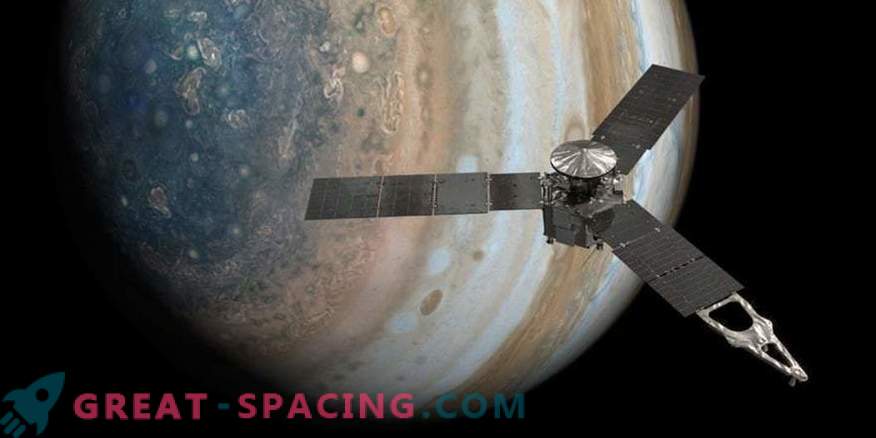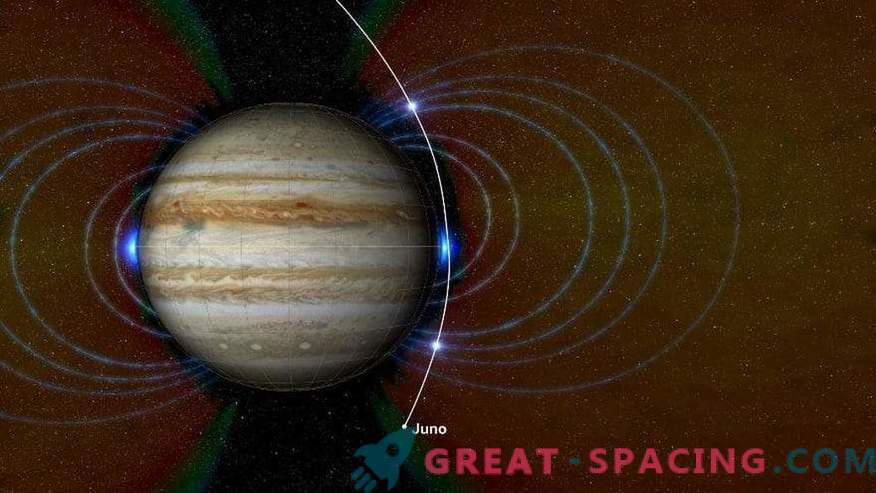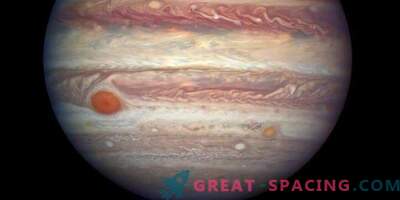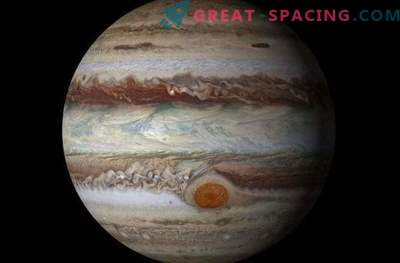
Information from the Juno apparatus, obtained in the period of the first flight over the Great Red Spot in July 2017, shows that this formation penetrates far below the clouds. In addition, in Jupiter there are two previously unspecified regions of radiation.
When studying the Great Red Spot, it was always interesting how deep it was. Information from the device Juno says that the most famous storm in our system enters the atmosphere for 300 km. This was helped to understand the microwave radiometer (MWR).
The Great Red Spot is a large-scale oval of crimson clouds in the southern hemisphere of Jupiter. They rotate counterclockwise. The width of the structure is 16,000 km (as of April 2017), which is 1.3 times larger than the Earth.

The graph shows the new radiation zone of Jupiter, located just above the atmosphere near the equatorial line. High-energy heavy ion sites in high latitudes are also noted.
Juno recorded that the roots of the stain go 50-100 times deeper than terrestrial oceans. In addition, they are much warmer at the base than at the top. Scientists are still arguing about the final for this design. The storm has been watched since 1830, and it can last another 350 years. But in the 19th century the spot was larger. Voyagers Reviews in the 1970s showed that it is twice the diameter of the earth, but now we are seeing a noticeable reduction in size. Of interest is the found radiation zone, which includes energetic oxygen, hydrogen, and sulfur ions. They move almost at light speed.

This is a representation of the Big Red Spot using data from a Juno radiometer. Each of the 6 channels of the device is sensitive to microwaves from different depths under the clouds.
The new site was able to find the Energy Particle Detector. Particles are believed to be derived from energetically neutral atoms created in the gas around the satellites of Io and Europe. Neutral atoms become ions because their electrons are removed on contact with the upper planetary atmosphere.
Juno also noted traces of a large mass of heavy ions in a region dominated by high-speed electrons. On the images are marked as high noise.
The Juno spacecraft was launched in August 2011 from Cape Canaveral (Florida) and arrived at Jupiter in July 2016. During the exploration period, the vehicle descends to cloudy peaks (3400 km) and studies the aurora.











































